On the catwalk: Germany

At the time of Caesar, the first Germans did not have a costume as such. They wore only the skins of wild animals, we took care of warming and survival, and not about fashion. Then the clothing of the rich differed from the peasant only in that it fit more closely to the body. There was not much difference between men's and women's clothing.
In subsequent centuries, the German costume changed and acquired characteristic features, but in the XVI century it became the onw we know it today. Then the line between the nobility and the lower strata of society became clearer. For example, only the rich could wear bright clothes, while the poor were allowed by law to wear only gray and brown clothes. There was a huge difference in the materials: silk and linen were used only by nobility, the lower strata of society were content with wool, in particular, with wool fabric — cotton. Moreover, until the 18th century, all handicrafts were banned, in particular, it concerned those needlewomen who wove lace. A little later, it was allowed to use lace of the most unpretentious colors in tailoring - white and black.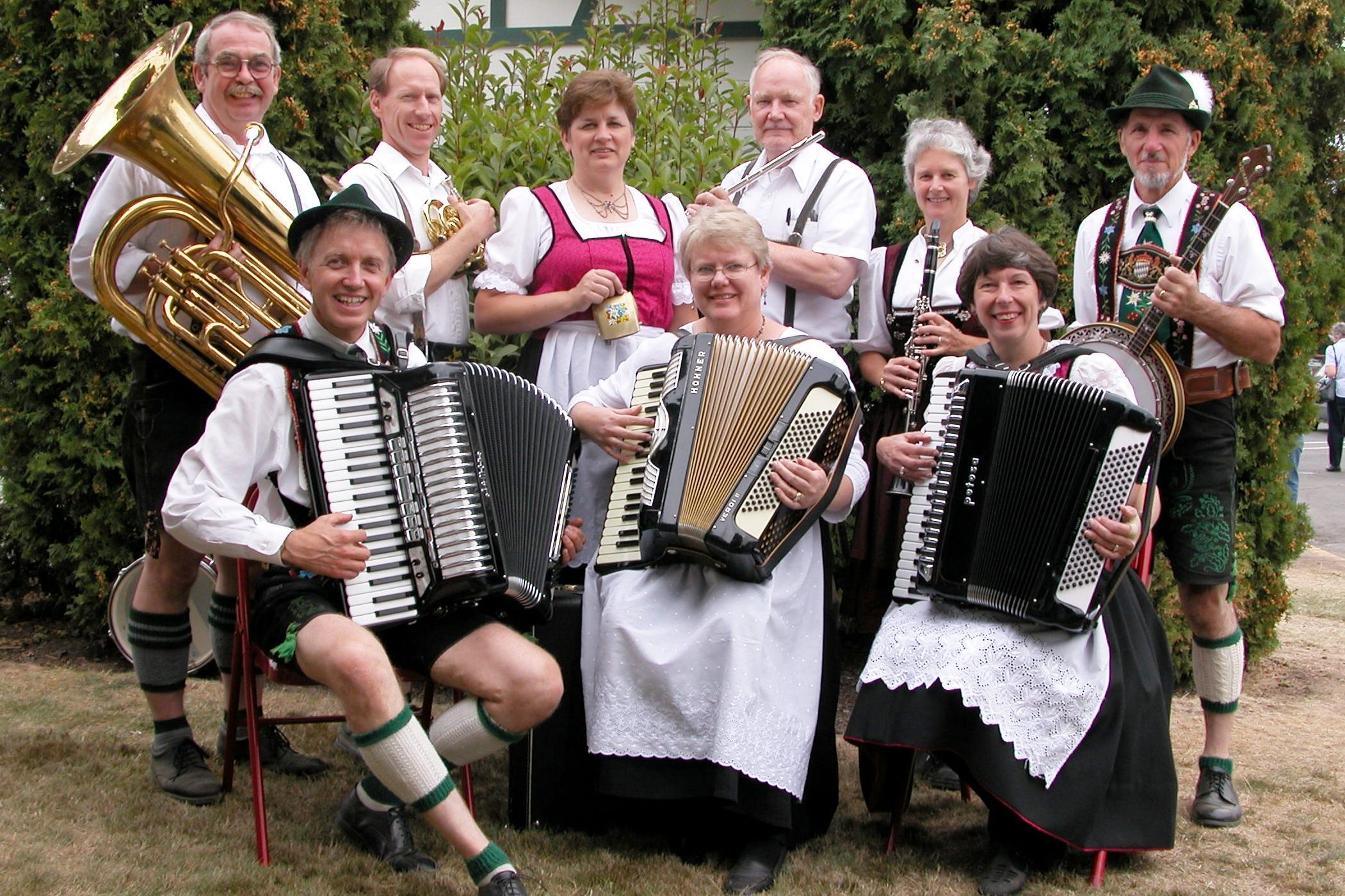 Photo oktoberfest.net
Photo oktoberfest.net
Since before the XIX century, Germany was fragmented, national outfits of different regions of the country have many significant differences. In the north, for example, they prefer to wear clothes of white, blue and light blue colour with some kind of accessory in red. For tourists, the main example of the German national dress is the South German Bavarian version of it.
Traditional German clothing is called "tracht". The peculiarity is that both both men's national costume and women’s can be called with this name. But when it comes to women's clothing, the name is used "dirndl".
The main outfit of German men consisted of four main elements: a shirt, vest, jacket (coat - in winter) and trousers with suspenders or a belt. Pants were most often worn with suspenders and straps with a horizontal bridge on the chest which was decorated with embroidery. The same patterns were most often embroidered on the pockets in order to give the costume bright individual notes.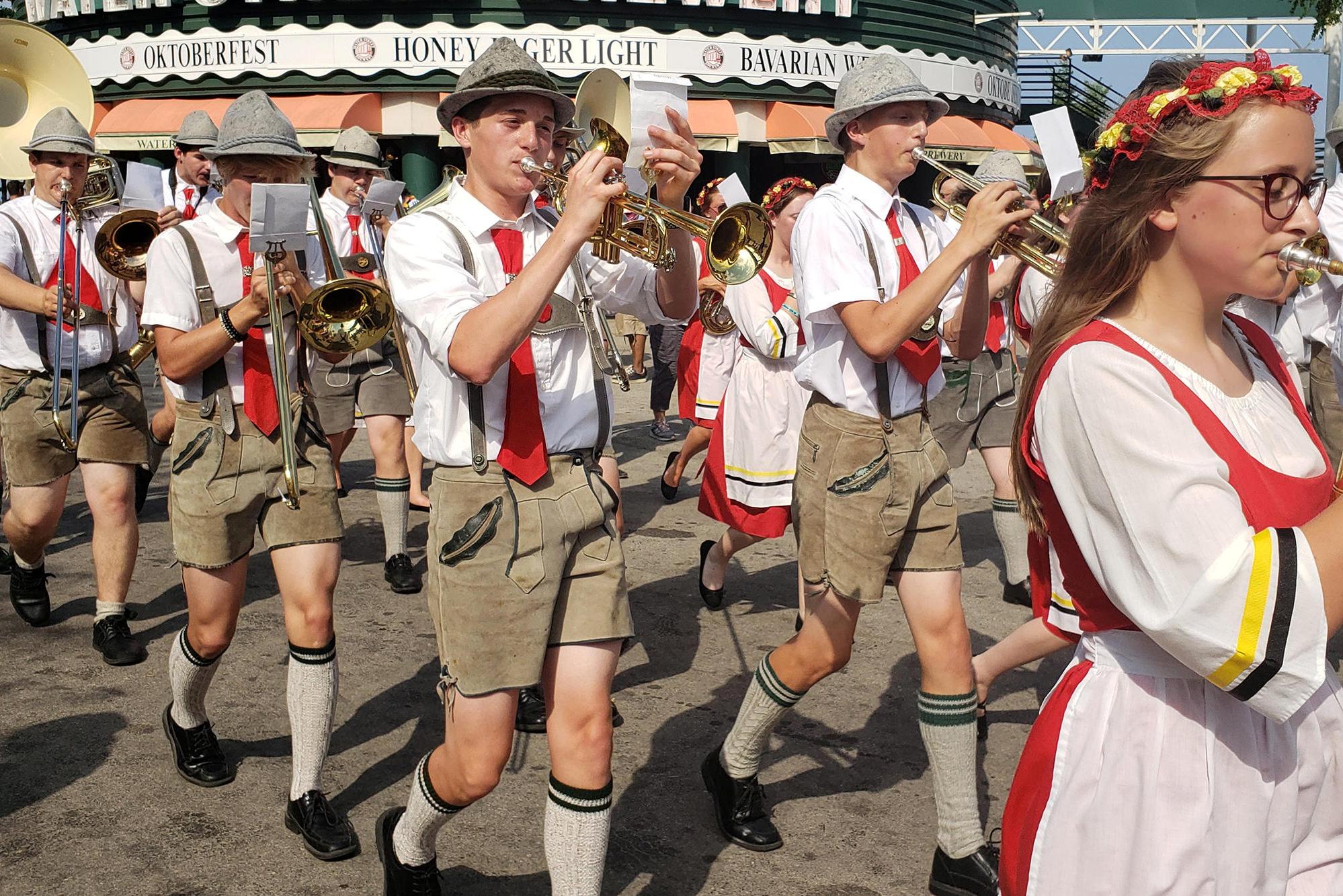 Photo wuwm.com
Photo wuwm.com
Now the pants have faded into the background and are increasingly used leather pants three-quarters long or short - to the knee. But the standard pants length was constantly varying. For example, in the XIX century from France to the German spaces they were inspired by a new fashion - long loose pants. But the trend quickly changed in favor of the short which was taken to wear with stockings. However, the fashion stocking was also changeable. The materials, colors and ornaments used in their production were constantly changing. Previously, the main German dandies preferred woolen stockings of blue, white or gray colors, whereas now only white ones are popular. Leggings amde the competition to the stockings and they are often worn under boots with thick soles.
The Germans paid much attention to the choice of a hat, which sometimes was not put off all day long. In Bavaria, for example, a green headdress with an eagle feather attached on top was popular.
Women's suit was as good as man's costume according to a variety of details. It consisted of a white blouse, a sundress (a corset and a full skirt) and an apron. Depending on the occasion, some features of the dress were different: if the girl was dressed for a holiday, she preferred a blouse with wide sleeves and a corset with lacing. If there was no special reason to dress up, a corset on the clasps was used.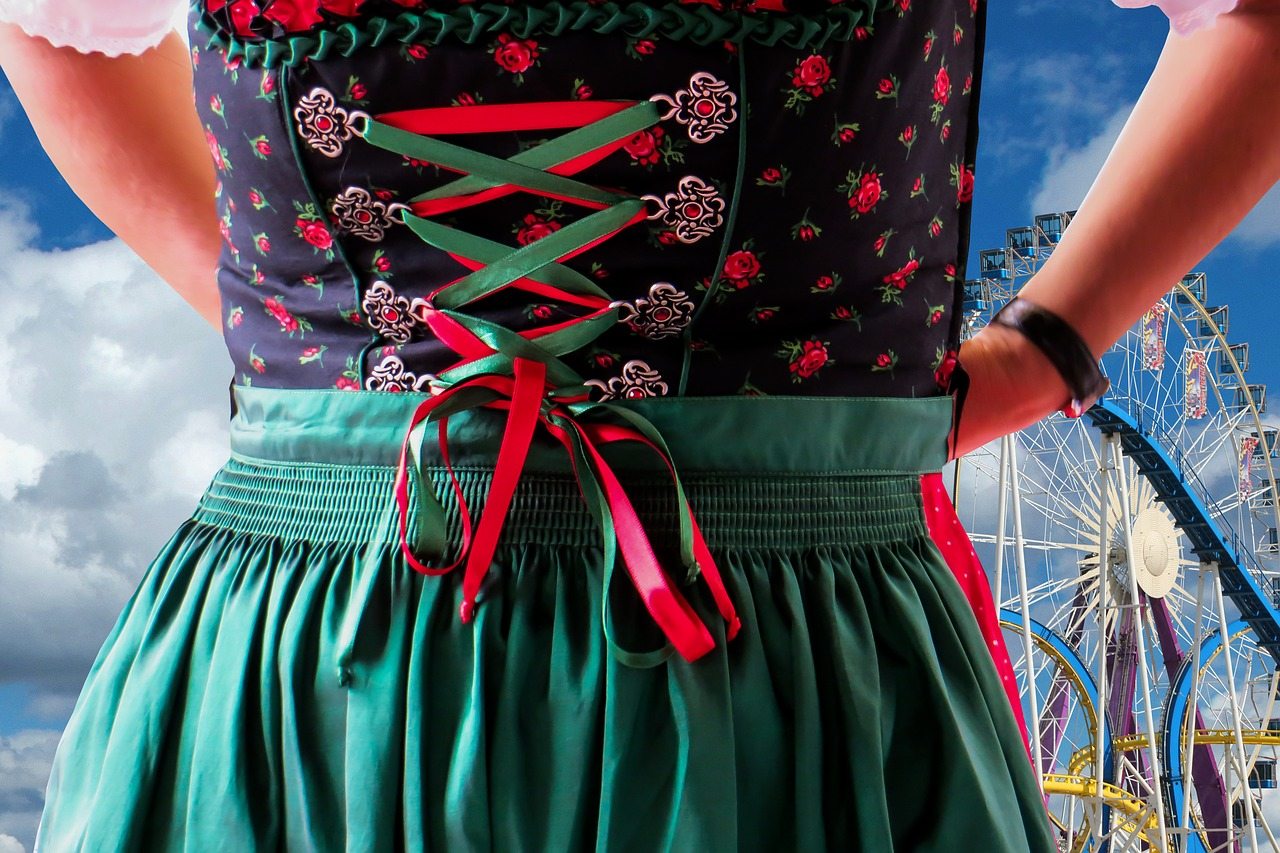 Photo happytowander.com
Photo happytowander.com
Various materials were used to create a sundress, most often wool, sometimes silk and linen. It is noteworthy that the skirt was decorated with many folds, which unequivocally echoes the Renaissance. By the way, the classic length of a women's skirt was calculated in a truly German way - its lower edge should be no higher than the height of the beer mug from the ground (approximately 27 centimeters).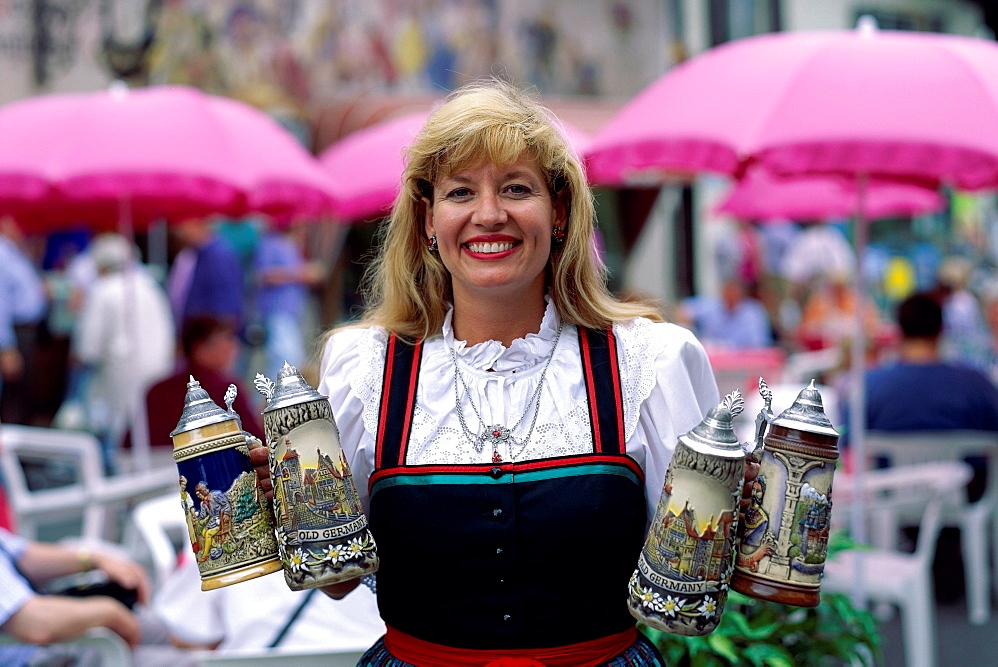
Photo robertharding.com
The apron was also a major fold, the most important element of the attire. Its length should always be less than that of a skirt. I was amazed by the imagination and its diverse design: colorful, monophonic, embroidered, trimmed with ribbon or lace. Silk, flax or cotton were most often used to create aprons. Hats also played an important role in the wardrobe of every girl. The most popular were scarves, straw hats and caps of various shapes with ribbons and other decorations.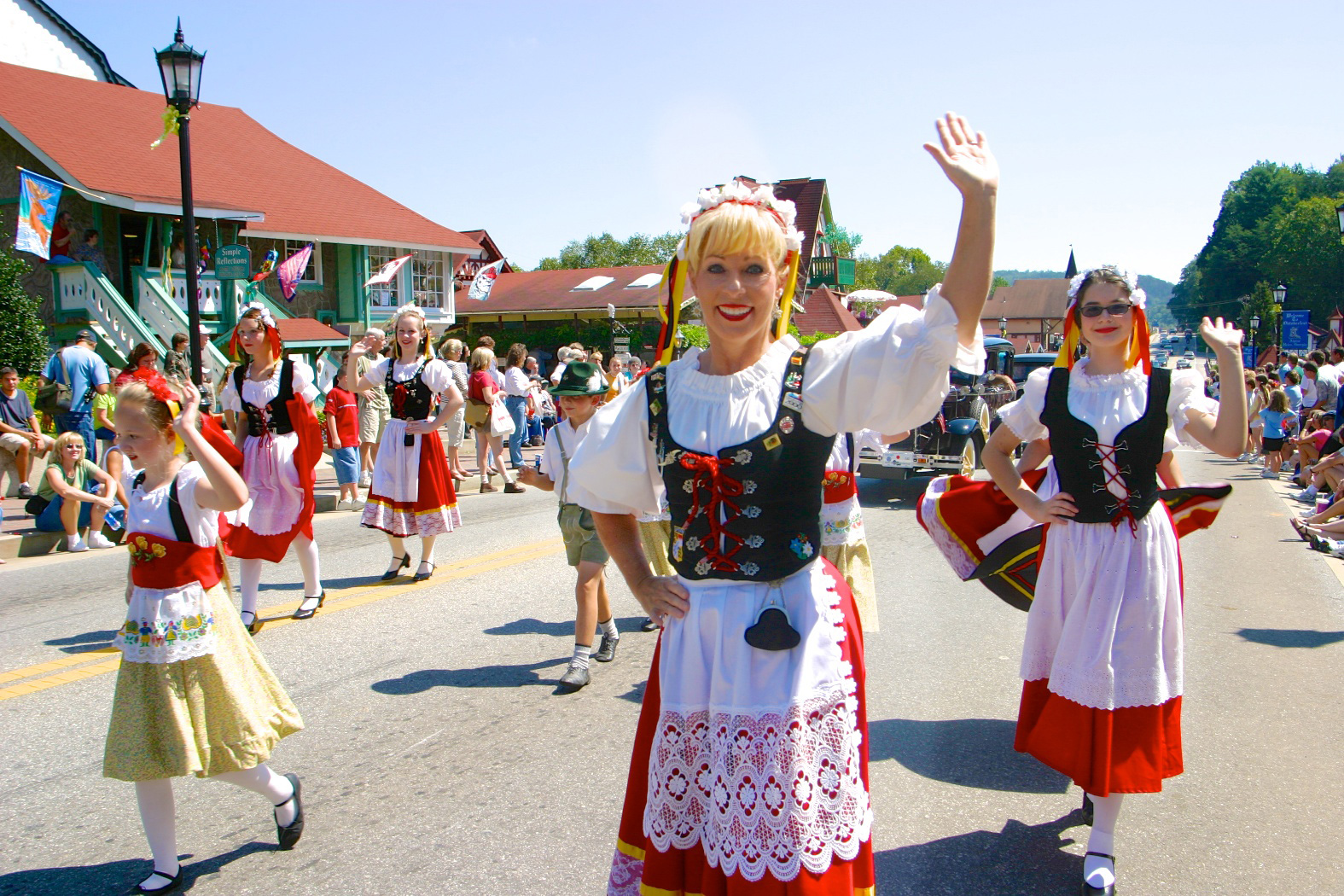 Photo exploregeorgia.org
Photo exploregeorgia.org
The national German costume has not lost its relevance unto this day. It is modified, adapted to the new era but still remains as unique, highlighting Germany among the countries of the whole world. It is not surprising that not a single local traditional festival can do without it. During high-profile celebrations, the country returns to its origins, revives old traditions and surprises the whole world with its special distinctive beauty.
Cover photo fonstola.ru





















